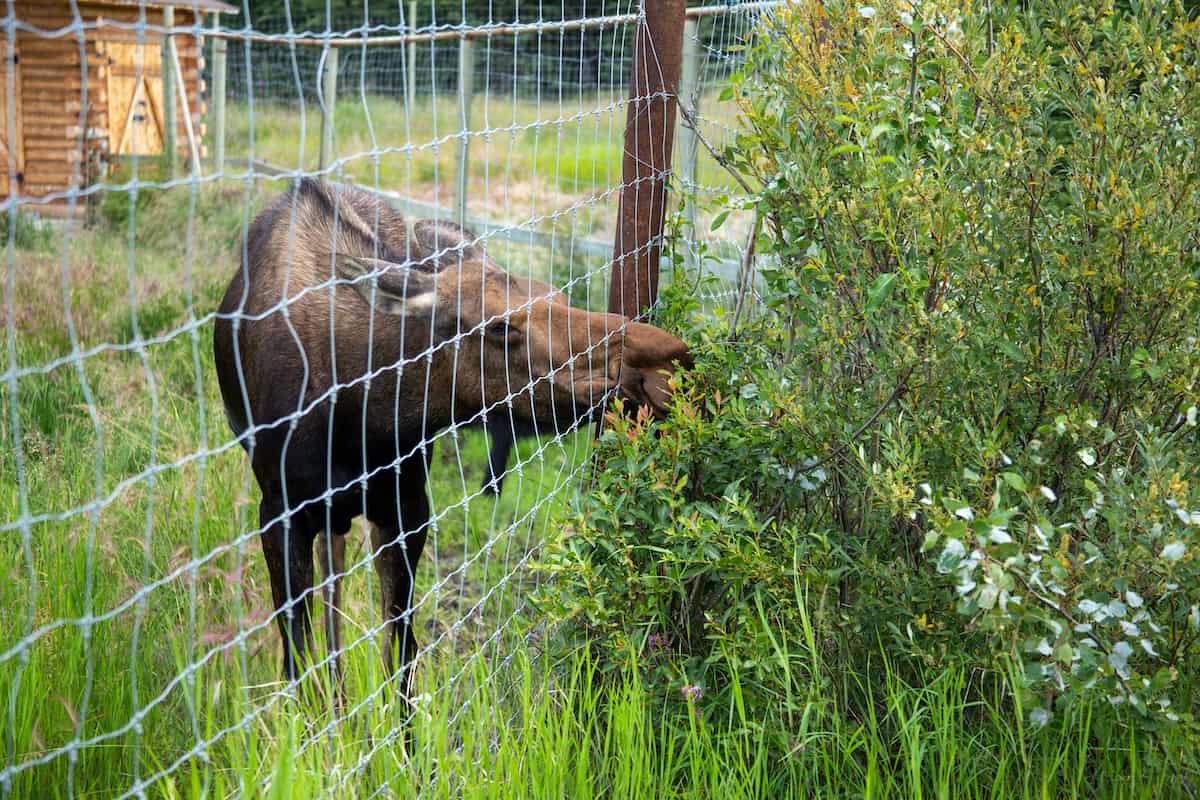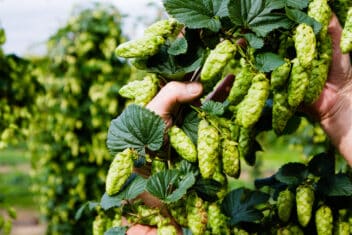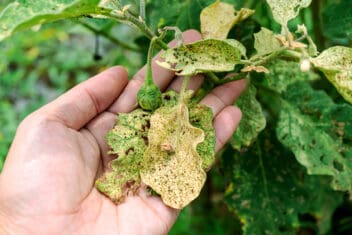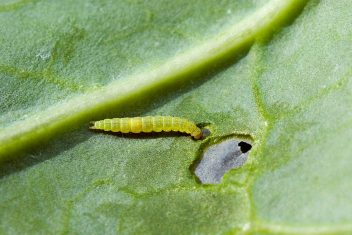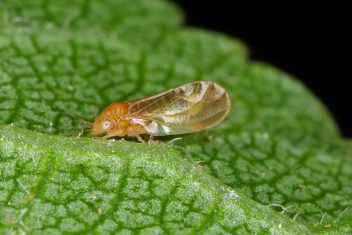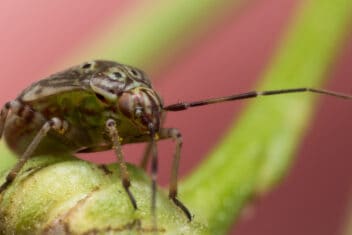Spotting a moose might be exciting… until you see that they’re standing in your garden eating your precious plants.
Moose are massive mammals and they feed that enormous body by eating 50 pounds of vegetation every day. In fact, their stomach holds over 100 pounds of food! I wish I could eat that much.
Moose are marvelous, but you don’t want them to hang out in your orchard or veggie garden. Here’s how to deter them the safe and humane way.
All About Moose in the Garden
Moose are majestic animals, with broad, regal antlers and big brown eyes. It’s exciting to find one in your yard. Most people run for the camera and think about their fruit trees later.
The good news is that moose, with the exception of nursing mothers, are solitary animals. Unlike deer, you won’t have an entire herd come into your yard.
The bad news is that they’re huge and can be aggressive. They aren’t always timid and flighty like deer.
Moose can be difficult to manage. Their large size allows them to push through weaker fences. Deterrents may or may not be effective.
An adult male bull moose weigh between 800-1300 pounds, and they can sometimes regard humans as an irritant rather than a threat. So it takes a little more effort to deter them.
In other words, think of a moose as a horse but wild, instead.
Plus it has no training and doesn’t like you.
Moose can be a real problem to gardens in northern states and neighboring Canada. Alaska, Idaho, Maine, Montana, Wyoming, Utah, and Wisconsin all have sizeable moose populations.
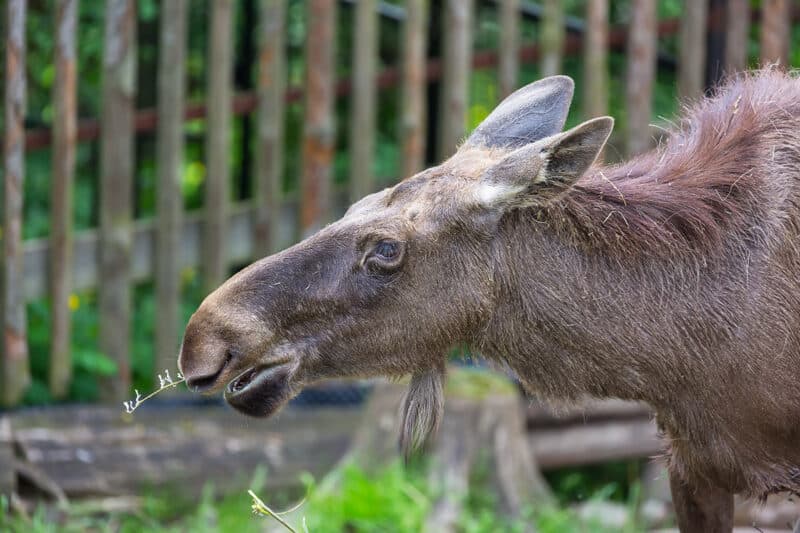
That said, moose are awesome creatures and deserve our respect. After all, they are just trying to live their life as nature intended.
Our jobs as homesteaders are to give them their freedom while protecting those crops that are important for our survival.
What Do Moose Eat?
Moose eat a variety of native and ornamental plants. Cabbage and lettuce are their favorite garden veggies and they love fruit trees – bark, leaves, and fruits.
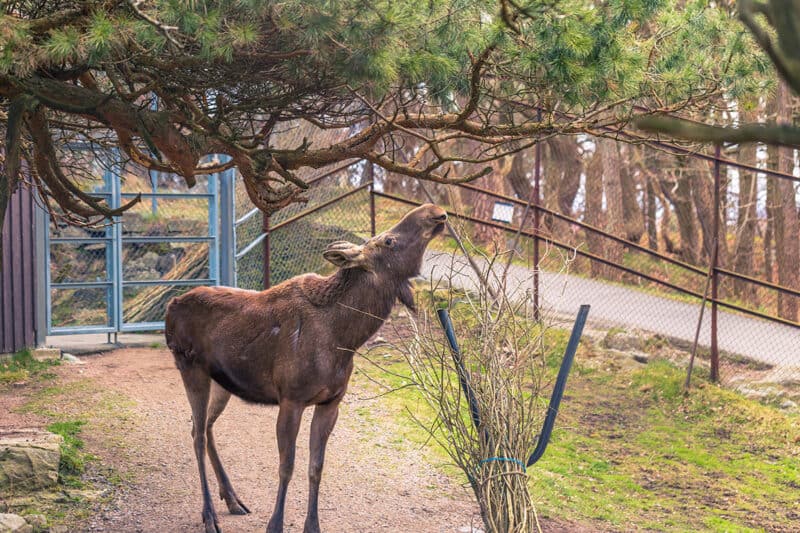
So what plants do they eat? The short answer is: all of them. However, according to the Alaska Department of Fish and Game, they do have some favorites.
These plants are the ones most likely to be damaged, but remember all plants are fair game in the moose playbook.
- Birch (Betula spp.)
- Labrador tea (Ledum spp.)
- Apples, Crab Apples (Malus spp.)
- Quaking aspen (Populus tremuloides)
- Cottonwood (Populus balsamifera)
- Willow (Salix spp.)
- Mountain ash (Sorbus scopulina)
- Highbush cranberry (Vaccinium pauciflorum)
In addition, they list plants that are occasionally damaged, which are:
- Fir (Abies spp.)
- Maple (Acer spp.)
- Serviceberry (Amelanchier spp.)
- Barberry (Berberis spp.)
- Pea Shrub (Caragana spp.)
- Cotoneaster (Cotoneaster spp.)
- Dogwood (Cornus spp.)
- Silverberry (Eleagnus commutata)
- Juniper (Juniperus spp.)
- Norway spruce (Picea abies)
- Colorado spruce (Picea pungens)
- Pine (Pinus spp.)
- Potentilla (Potentilla fruticosa)
- Mayday (Prunus padus)
- Amur chokecherry (Prunus mackii)
- Currant (Ribes spp.)
- Roses (Rosa spp.)
- Raspberry (Rubus spp.)
- Elderberry (Sambusca spp.)
- Lilac (Syringa spp.)
- Lowbush cranberry (Vaccinium vitis-idaea)
- Viburnum (Viburnum spp.)
7 Deterrents to Keep Moose Away
There are many ways to attempt to prevent moose from nibbling on your trees or vegetable crops. Using a combination of deterrents seems to work best. In other words, don’t put all your eggs in one basket.
1. Fencing
While moose are quite large, they are fantastic jumpers. They will also use their body weight to knock down barriers. Fences need to be tall and strong to keep out moose from gardens or yards.
Fences need to be 6-8 feet tall and made of wooden posts and tightly woven wire to be effective. A short fence won’t do much good.
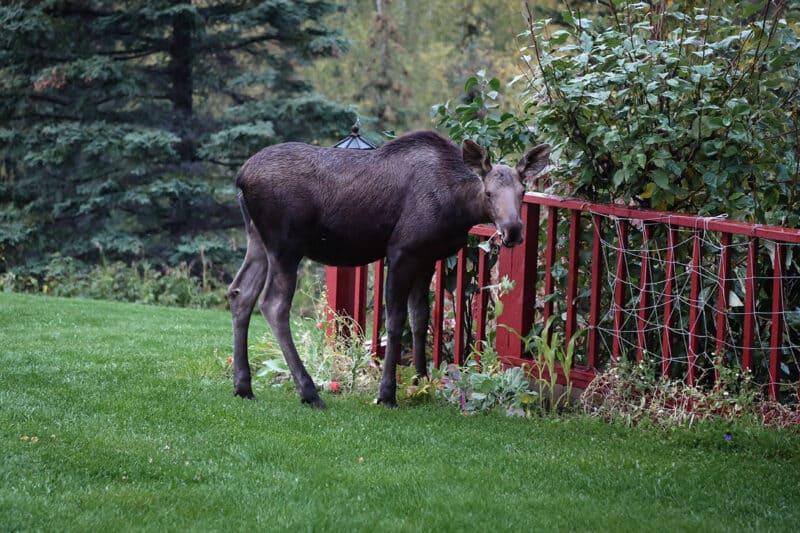
If fencing a large area is cost prohibitive you can simply fence in a small area. This works well when you have a few orchard trees or berry plants you want to protect.
Place individual tree fencing in a triangle shape. Use sturdy wooden posts at each point.
If you don’t want to have permanent posts in your orchard you can use temporary steel posts. However, note they aren’t as strong.
Galvanized wire fencing needs to be 5-7 feet tall.
The triangle should be about 2-3 feet from the tree. Don’t leave enough room that the moose thinks they can jump inside the fence to grab a bite.
For added protection, you should also wrap fencing around the tree’s lower trunk and sink wire a few inches into the ground. Moose will get down on their knees and try to wiggle under things.
This is a comical thing to watch but maybe not when they’re trying to eat your apples.
Keep the fencing a couple of inches away from the trunk so it doesn’t girdle the tree’s growth.
2. Electric Fencing
Electric fencing is also effective for preventing moose from munching. Keep in mind that even an electric fence needs to be substantial to keep them from trying to jump over or wiggle under.
A 6-foot tall poly rope fence with seven rows of electrified rope will deter most moose. You can place poles 15 feet apart.
You can also build an 8 foot woven wire fence and run two strands of electric wire along the top. The advantage is the woven wire fence helps to create a visual barrier while the electric fence gives them a physical warning.
The combo will stop any moose who feels they can jump over the fence.
3. Vaseline and Red Pepper
Another way to get moose to leave your trees alone is to target their sense of smell and taste. Combine 3 tablespoons of red chili powder with a jar of Vaseline. Spread this on leaves that are at “moose level,” and after a few bites, they’ll go elsewhere for a meal.
This is not the healthiest method for the trees leaves as it stops their ability to metabolize. So don’t lather it all over. Just pick out a few leaves to trick moose into thinking the whole tree doesn’t taste good.
4. Noise
If you see a moose moseying into your yard, shouting, banging pots, and noisemakers may all work well in summer to drive a moose from the garden.
However, in winter when they are hungry and tired from tramping through the snow, they’ll simply ignore you and continue to eat your apple trees.
5. Plantskydd
Plantskydd is an organic OMRI approved animal deterrent. It can be used to repel a number of critter pests such as rabbits, squirrels, deer, and yes, moose.
This is one of the most highly recommended deterrents for moose. It’s suggested on several Alaskan gardening pages.
Plantskydd (pronounced Plant Skid) is made from blood, vegetable oil, and water. The oil makes it adhere well even during periods of rain or snow.
For moose, you want to use the liquid or powder concentrate form. Granular applications are for smaller ground-dwelling animals.
It shouldn’t be sprayed on the edible portions of the plants such as lettuce leaves and fruits. Also, keep in mind the blood ingredient is a fertilizer so you don’t want to overdo it.
6. Dogs
Dogs (as in wolves) and moose have been enemies throughout time. Wolves in a social group strategize and hunt down moose as a pack.
However, that does not mean your Golden Retriever is going to frighten a moose. Large dogs are often enlisted to scare pests from yards, however, this tactic may backfire as moose are known to fight back against a solitary dog.
This can cause severe injury to your family pet so use caution when having dogs outside when a moose is about.
A group of trained livestock guardians might have a better chance of keeping a moose out of the garden, but you might want to use motion-activated barking machines instead.
7. Install Rubbing Posts
This isn’t necessarily a deterrent, but it will keep your moose from bugging the trees you care about.
Rubbing posts give the moose a place to rub so they don’t use your trees for a scratching post. In late fall, male moose especially are looking for places to rub the velvet off their antlers.
Place rubbing posts on the edges of your property or on the outside of a fenced-in garden.
Use a round post that is 8 feet tall. Dig a hole that is two feet deep and secure the pole with concrete. This will make it sturdy so that it won’t topple when a male moose rubs against it.
What Doesn’t Work?
Some common moose-deterring recommendations out there either don’t work, or they only work temporarily until the moose figures out that they aren’t a threat.
Tinsel
A number of gardeners advise hanging tinsel from trees. Tinsel is actually harmful to wildlife, the environment, and your family pet. Pets sometimes eat the tinsel which can cause an intestinal blockage as well as leach toxins into the body.
So avoid tinsel.
Human Hair
Human hair, like soap, only works sometimes. However, it’s free and easy to acquire. Also, hair is biodegradable.
Sprinkle some clumps of hair around your plants or hang them in mesh bags in trees. The smell may deter the giant beasts from your garden areas.
Then again, it might not. This seems to be a hit-and-miss method, but it doesn’t hurt to try.
Irish Spring Soap
Irish spring soap gets a brand boost when we talk about deterring animals from the garden. However, any strong smelling soap is worth checking out. The catch is this only tends to work about half of the time.
This is one of those things that moose quickly figure out and learn to ignore.
Hang some chucks of smelly soap from your young trees, but it’s smart to use one or two other deterrents to be safe.
How To Handle An Aggressive Moose
Moose are typically viewed as less aggressive than bears and are normally not aggressive towards humans. However, a male in rut (breeding season) or a female with calves are going to feel protective.
If you see a moose in your garden, stay away and consider leaving it alone if it isn’t eating your plants. Otherwise, make some noise to drive it off while maintaining your distance.
A moose can charge, kick, and use their antlers to protect themselves or their young. They can be particularly stubborn in the winter when they’re tired from walking through the snow.
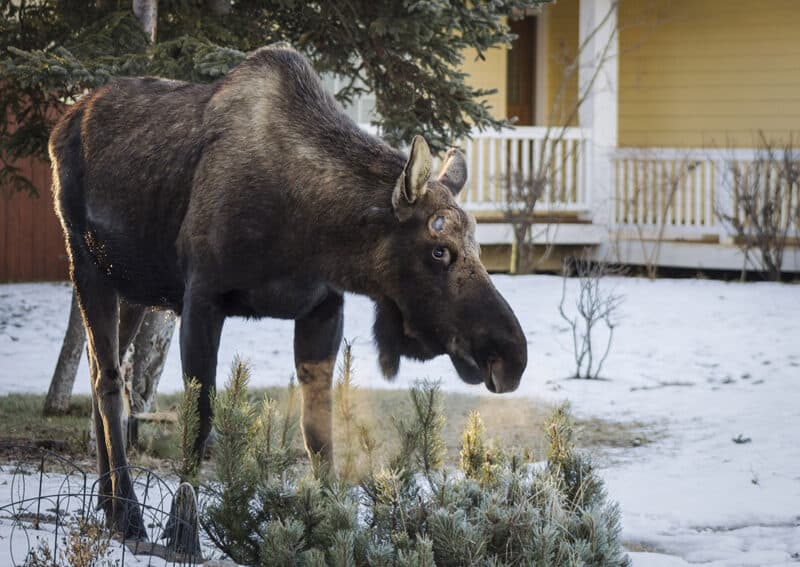
Humans sometimes harass a moose when it comes into their yard. Throwing snowballs at moose, chasing them, or trying to hit them with something can cause aggressive behavior. That’s not the way to deal with the issue.
What To Do When You Meet A Moose
Instead of chasing them or throwing things at them, here are some better options.
- Give moose plenty of room.
- Don’t approach them closely.
- Allow a moose to rest if they are lying peacefully on your property
- Never walk between a mother cow and her calf.
- Never feed moose – it is illegal in most states because it encourages dependency and aggression.
- Leave the moose a path to escape that doesn’t involve going through you.
- Watch for warning signs – raised hair on the back, ears laid back, and licking lips.
- If you see warning signs, get out of there and put something between you and the moose.
- If a moose attacks, curl up in a ball, wrap your arms around your head to protect it, and hold still.
